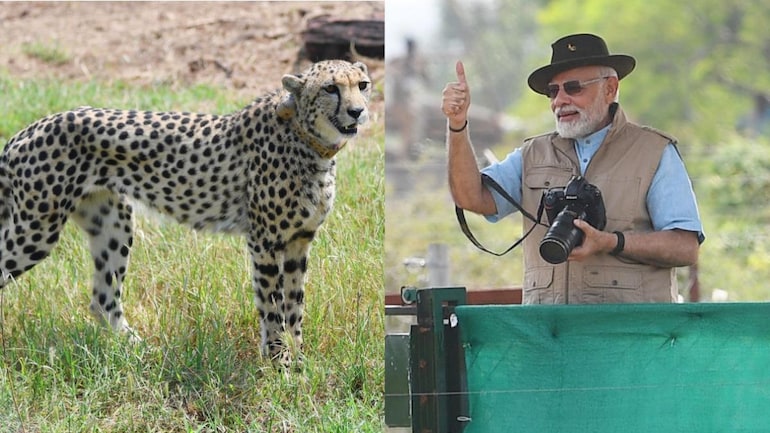” Cheetahs are our guests; we should give them a few months to make Kuno national park their home “
– said PM Modi
Latest Update
On Prime Minister’s 72nd birthday, eight cheetahs that had been flown in from Namibia, South Africa, were cheerfully released into the Kuno National Park in the state of Madhya Pradesh by PM Modi. On a special cargo Boeing 717, the new members of our nation’s animal kingdom arrived in Gwalior this morning.

It should be emphasized that these huge cats are not technically new to India’s biodiversity because, regrettably, they only became extinct in 1952 as a result of illegal hunting and other misdeeds that resulted in habitat degradation.
According to Prime Minister Modi, the project took decades to develop. The public’s participation and extensive research-based policies both played a significant part in making this achievement possible.
The PMO emphasized that the Project Cheetahs’ primary goal isn’t simply sustainability or security, but also nature, the environment, and everything it entails as the foundation for India’s sensibility and spirituality. By reviving the wildlife, the introduction of cheetahs should, of course, have a positive impact on the local ecosystem and biodiversity.
What Is Project Cheetahs?
The International Union for Conservation of Nature’s (IUCN) regulations are followed while reintroducing wild species.
The plan was put into motion after the Supreme Court approved the restoration of African cheetahs in India because there is a suitable habitat for them. However, the Wildlife Trust of India started the conversation back in 2009.
For the potential reintroduction of cheetahs to the then-extinct species, wildlife experts, Ministry of Environment, Forests and Climate Change authorities, as well as state legislators, requested the decision to study suitable places.
The endeavor is a first-of-its-kind transfer of a large wild carnivore across continents. Cheetahs will help restore the open forest and grassland ecosystems of India. Protecting biodiversity and enhancing ecosystem services like water security, carbon sequestration, and soil moisture conservation will benefit society as a whole.
In January 2022, the Center revealed a plan for bringing Cheetah to India. In different National Parks, 50 cheetahs will be released during the course of the project’s five-year duration. The cheetah is the only large carnivore to have been extinct in India as a result of habitat destruction and overhunting. The Centre claims that the introduction of the cheetah is not just an effort to aid in the recovery of the species but also an endeavor to aid ecosystems in recovering a lost element that was crucial to their evolutionary history.
Story Of Extinction
On this celebratory occasion, IFS Parveen Kaswas, shared on Twitter, his knowledge about the history of cheetahs in India. History indicates that cheetahs and humans have never engaged in any kind of violence. They were commonly utilized by hunting groups and were very domesticated.
In ancient days, kings and Britons hunted not just cheetahs but the majority of charismatic creatures. It was already too late when the Wildlife Protection Act of 1972 was passed. In India, cheetahs were already extinct. Additionally, several historical paintings depict cheetahs and lynxes being chained up like house dogs.
The first cheetah was raised in captivity in India in the 16th century, during the reign of the Mughal emperor Jahangir. Under his father Akbar’s rule, there were 10,000 cheetahs, with 1,000 of them residing in his palace.
Hunters used to follow the animal for both sport and reward in the distant past. With the exception of the high highlands, it was prevalent all over the country. According to a BBC article, India had at least 230 wild cheetahs between 1799 and 1968.
When causing habitat loss for these large cats, the Indian reserves were not very considerate. The Maharajah Ramanuj Pratap Singh Deo of Surguja State is believed to have killed three Asiatic cheetahs in 1948, leaving behind the last known physical trace of the species in India.
The Department of Environment formally requested the reintroduction of Asiatic Cheetahs to Iran in the 1970s, and it appears that they were granted their request. The cheetah was something Indira Gandhi was very interested in bringing back. Sadly, when the country declared an emergency and the Shah of Iran was toppled, the negotiations came to an end.
But 2009 saw a resurgence of the controversy, and it was decided to introduce the African cheetah to India.
Read More: Netizens claim Narendra Modi’s birthday as “National Unemployment Day”












